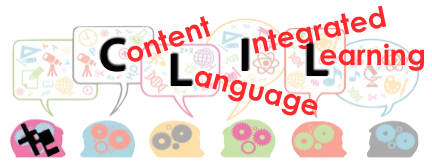This post is a justification and reflection upon the project we are currently doing at the school where I work, Ninfa Laurenzo ECC. My project is about the profession of comic creators because my students decided to do it. I am glad to guide them in a project like that since for years I have been the coordinator of reading programs for children and families at different schools and libraries in the region of Seville, Spain.
Having a comic or a story as a vehicle for learning is not new; indeed, it is one of the most used procedures at schools and education all over the world. The literary texts that the students listen with attention raise their message with extra and enriching information: socio-cultural conditions that will allow listeners to know about events, information and signals. And by understanding the story, remembering it and expressing it according to their feelings and experiences, primary students will personally participate in the reconstruction of the literary message, value it and interpret its contents making them theirs even if they are in the new language.
The advantage of popular literature is that the content that children access has the peculiarity that they exist in almost every culture in the world. All histories share an underlying basis and a relatively invariant structure, despite some differences. Obviously, they have some aspects or parts in common, like an introduction or presentation of the characters and the setting; a plot, in which the action is developed; an end with a final outcome of events. Another important thing in common is the fact that children feel sympathy for characters according to their features; they predict the action of the wicked witch, for instance, and are sure that the prince will save the princess after conquering a thousand dangers and obstacles.
They can also anticipate moments or episodes in the story, like the climax around which the action is organized. As they expand their knowledge and the volume of stories they hear, they manage to structure the stories according to a repeatable internal pattern, those discussed above. They also delimit the different characters and roles they play in the story. And finally, they participate in creating the story, using their language or the new, with a motivated attitude, a meaningful behavior and a learning process as effective as pleasant.
In this early stage of education, working with language and literature with comics and storytelling is benefitial since they can start to understan how a language works, as a system of signs that structures and formalizes experience and reality. Language and literature are elements of culture that complement each other, hence the contents of this area should enable the acquisition and mastery of the language, as well as knowledge of the various literary manifestations for their formative value as a universal heritage. This shows the interest in initiating the student in children's literature. In line with what has been pointed out above, recent studies show how the student acquires better the knowledge of a language if it is taught as a subject studied and not as a subject of study.
 Telling a story to someone who wants to listen to it, entertaining themselves by learning about the art of telling an anecdote or a joke: all are entertainments, but also interpretations or representations of real life. They can be models of behavior beyond history and that is why they tend to have a teaching, because we project them, somehow, with our reality, no matter how far we look at it. The existence of archetypes shows a need to organize within history so that the pedagogical contribution goes from simpler to more detailed and complex. The models used have formed and will form a common base and memory for the society that listens to them and many of the models of behavior or interpretations of reality will undoubtedly form part of a know how to act or know how to solve.
Telling a story to someone who wants to listen to it, entertaining themselves by learning about the art of telling an anecdote or a joke: all are entertainments, but also interpretations or representations of real life. They can be models of behavior beyond history and that is why they tend to have a teaching, because we project them, somehow, with our reality, no matter how far we look at it. The existence of archetypes shows a need to organize within history so that the pedagogical contribution goes from simpler to more detailed and complex. The models used have formed and will form a common base and memory for the society that listens to them and many of the models of behavior or interpretations of reality will undoubtedly form part of a know how to act or know how to solve.
When working with stories, the content of the lessons becomes more important than the language itself and this means that it is easier to relate the lessons to the experience and self-interest of the students. In addition, as we have already pointed out, such work helps the learning process as students can associate words with functions, structures and situations with a particular story or "reality". It is clear that the association contributes to have a good memory and improve their thinking levels as well as motivation for learningl; and learning a language in a given context helps understanding and memory.
The storytelling, on the other hand, allows to deepen in the issues that arise with depth and rigor and develops reactions and feelings in the students that, otherwise, can not demonstrate with so much clarity in a textbook. The teacher's work, in this type of approach, provides a personal touch to the lessons, since it is the educator who knows the pace of classroom learning and of the students - and their needs - in particular, when they need more vocabulary or require communicative experiences.

Este obra está bajo una
licencia de Creative Commons Reconocimiento-NoComercial 4.0 Internacional.







